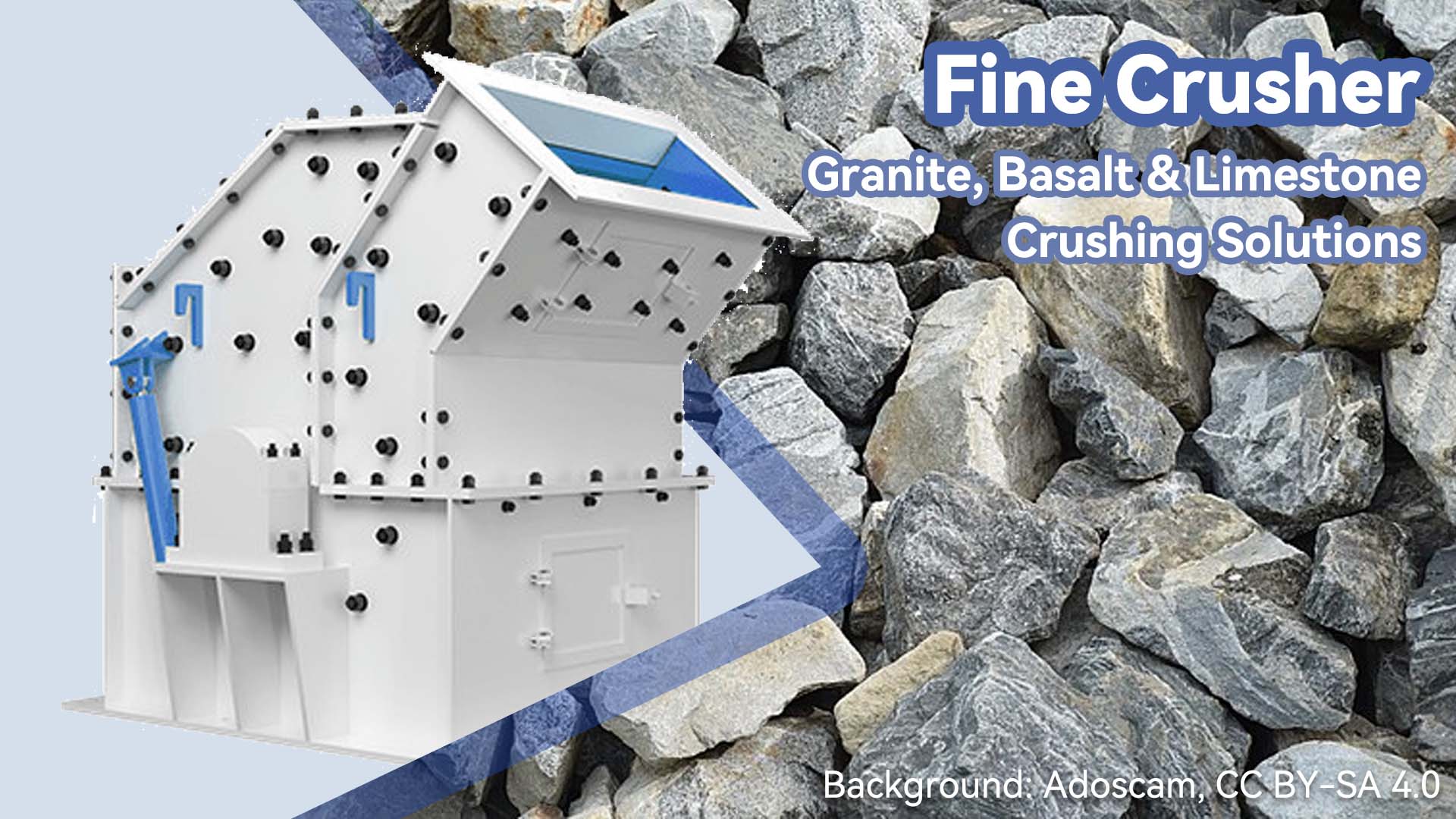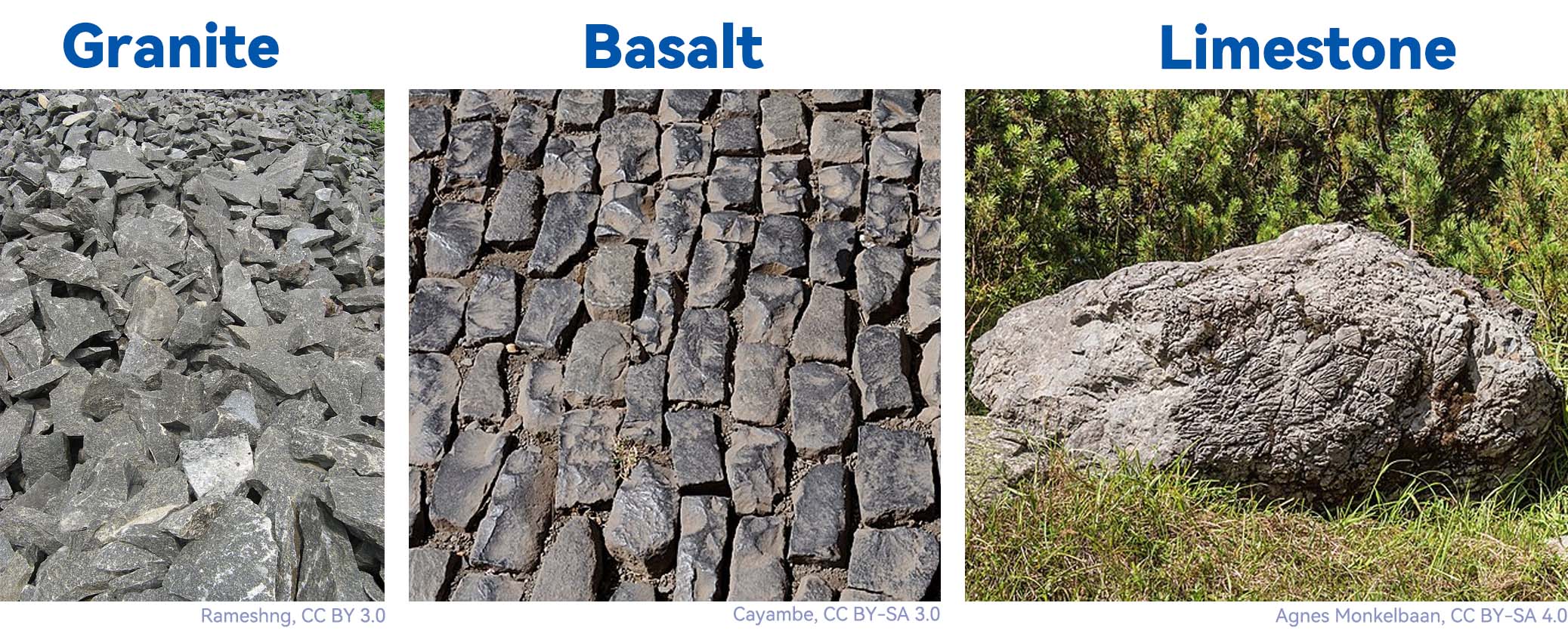The Fine Crusher stands out as a robust and highly efficient machine engineered for precision size reduction in various industrial applications. Its design prioritizes operational stability and reliability, making it particularly suitable for secondary or tertiary crushing stages where consistent output gradation is crucial. The machine's simplified mechanical structure not only enhances durability but also significantly reduces maintenance complexity, allowing operators to achieve optimal productivity with minimal downtime.

This versatile equipment excels in processing a wide spectrum of materials including igneous rocks like granite and basalt, sedimentary formations such as limestone, and mineral ores including iron ore and bauxite. The intelligent hammerhead configuration demonstrates exceptional wear resistance, ensuring prolonged service life even under continuous high-intensity operation. What makes the Fine Crusher particularly valuable is its adaptability across different sectors - from aggregate production in construction to mineral processing in mining operations, delivering uniformly sized particles ready for downstream applications.
Rock Characteristics and Crusher Compatibility
Granite (Mohs 6-7) Processing Solutions
Granite's exceptional hardness requires specialized crushing approaches. Medium-speed rotors operating at 35-45m/s deliver optimal energy transfer, effectively balancing fragmentation force with mechanical wear. This speed range prevents premature component degradation while maintaining sufficient impact energy for effective size reduction.
The implementation of multi-stage impact plates creates sequential crushing zones within the chamber. This staged approach allows progressive size reduction, minimizing energy waste on already-fragmented material while significantly reducing undesirable fines production. The geometric arrangement of these plates creates controlled particle trajectories, optimizing the crushing efficiency for granite's interlocking crystal structure.
Basalt (High Silica Content) Wear Resistance
Basalt's abrasive silica content exceeding 45% demands extraordinary wear protection. Ceramic-embedded liners utilize advanced material engineering, where silicon carbide or alumina ceramic inserts are metallurgically bonded to high-grade steel substrates. This hybrid construction combines the impact resistance of metal with the exceptional wear resistance of ceramics, achieving service life improvements of 300-400% compared to conventional manganese steel in high-silica applications.
The strategic placement of these composite liners focuses protection on high-wear zones while maintaining overall structural integrity. Special attention is given to impact points and material flow paths where abrasive sliding contact occurs. The liner profile is carefully designed to direct material flow while minimizing direct abrasion, creating a self-renewing protective layer of crushed material in less critical areas.
Limestone (Mohs 3-4) High-Efficiency Crushing
Limestone's relatively soft composition enables aggressive processing strategies. High-speed rotors operating at 50-60m/s generate sufficient centrifugal force to propel material against crushing surfaces with optimal energy. The rapid impact frequency compensates for the lower individual impact energy required, resulting in higher throughput capacity while maintaining particle shape characteristics.

Lightweight hammer designs complement the high-speed operation by reducing rotational inertia and allowing faster acceleration. This dynamic combination increases production rates by approximately 30% compared to conventional configurations. The reduced hammer mass also decreases energy consumption per ton processed, while specially designed hammer profiles create efficient material ejection patterns that prevent chamber clogging.
Key Parameter Configuration Guide
Screen Plate/Impact Plate Gap Adjustment (5-20mm Adjustable Range)
The optimal gap setting for crushing granite typically falls between 10-15mm. This specific range ensures the production of cubical-shaped aggregates with clean fracture surfaces, which is particularly important for high-value construction applications requiring superior interlocking properties. The slightly narrower setting compensates for granite's higher hardness and abrasiveness compared to other rock types.
When processing limestone, operators can safely increase the gap to 15-20mm range. The softer nature of limestone allows for higher throughput rates while still maintaining acceptable particle shape characteristics. This configuration prioritizes production efficiency while meeting the typical quality requirements for cement production or road base materials where angularity specifications are less stringent.
Air Classification System for Fines Removal
Modern stone crushers incorporate precision air classification systems to control excessive fines generation. Maintaining the sub-0.075mm particle content below 5% is critical when producing aggregates for asphalt mixtures. The air classifier creates a controlled vortex that separates ultra-fine particles from usable aggregates based on their aerodynamic properties and mass.
The system's adjustable airflow velocity and classifier wheel speed allow operators to fine-tune the cut point according to specific material characteristics. Effective fines removal not only meets quality specifications but also reduces material waste and improves the overall efficiency of downstream processes like bitumen coating in asphalt plants.
Real-World Cases and Economic Benefits
Granite Aggregate Production Line (200 tons/hour)
The integration of a fine crusher with an air classification system in this granite processing line has demonstrated remarkable improvements in product quality. By reducing needle-like and flaky particles to less than 3% in the final output, the operation achieved a 15% increase in market price for its premium-grade aggregates. This technological combination ensures consistent particle shape while maintaining high throughput capacity, making it particularly valuable for construction applications requiring high-strength concrete mixtures.
The advanced particle shaping capability directly translates to better packing density in concrete formulations, which explains the significant price premium. Operators report that the system pays for itself within 18 months through both the product value enhancement and reduced wear on downstream equipment. The elimination of manual sorting stages further contributes to labor cost savings while ensuring stricter compliance with international aggregate standards.
Limestone Manufactured Sand Project
When compared to traditional hammer crushers in limestone processing, the fine crusher solution has proven superior in operational economics. The absence of screen grate clogging issues - a persistent challenge with hammer mills - results in 30% lower maintenance expenditures. This reliability advantage becomes particularly crucial in continuous operations where unplanned downtime can disrupt entire production schedules.
The project also revealed unexpected benefits in product consistency, as the fine crusher's grinding chamber design produces more uniform particle size distribution without generating excessive fines. This characteristic makes the manufactured sand ideal for high-value applications like self-leveling compounds and precision castings. Over a five-year period, the cumulative savings from reduced part replacements and energy efficiency have exceeded initial investment projections by nearly 40%.
Future Trends: Intelligent Control Systems
Modern stone crushers are incorporating AI-powered gap adjustment systems that revolutionize how we process different materials. These smart systems use real-time laser particle size analyzers to continuously monitor the crushed material's characteristics, allowing the machine to automatically adjust rotor speeds and crushing gaps based on the detected rock hardness. This technological advancement ensures optimal crushing efficiency while reducing wear on components, as the system can instantly adapt when encountering variations in material properties within the same batch.
The integration of artificial intelligence brings unprecedented precision to aggregate production. By analyzing thousands of data points per minute from multiple sensors, the system can predict wear patterns and recommend maintenance before components fail. This predictive capability combined with the dynamic adjustment feature results in consistent product quality regardless of input material fluctuations, making these intelligent crushers particularly valuable in quarries with heterogeneous geological formations.
Zero-Emission Crushing Technology
Contemporary crushing systems now achieve remarkable environmental performance through integrated dust suppression solutions. Advanced negative pressure dust collection systems work in tandem with precisely calibrated water mist sprayers to maintain airborne particulate levels below strict 10mg/m³ PM2.5 standards. This dual approach captures dust at both the primary impact zones and material transfer points, creating cleaner work environments that meet increasingly stringent industrial health regulations.
The water mist systems utilize sophisticated nozzle arrays that activate only when needed, conserving water while maintaining effectiveness. These systems monitor humidity, material flow rates, and dust concentration to optimize spray patterns in real-time. When combined with enclosed conveyor systems and final-stage air filtration, modern stone crushing plants can operate in urban areas without causing noticeable dust pollution, a significant advancement from traditional crushing operations that often generated visible dust clouds.